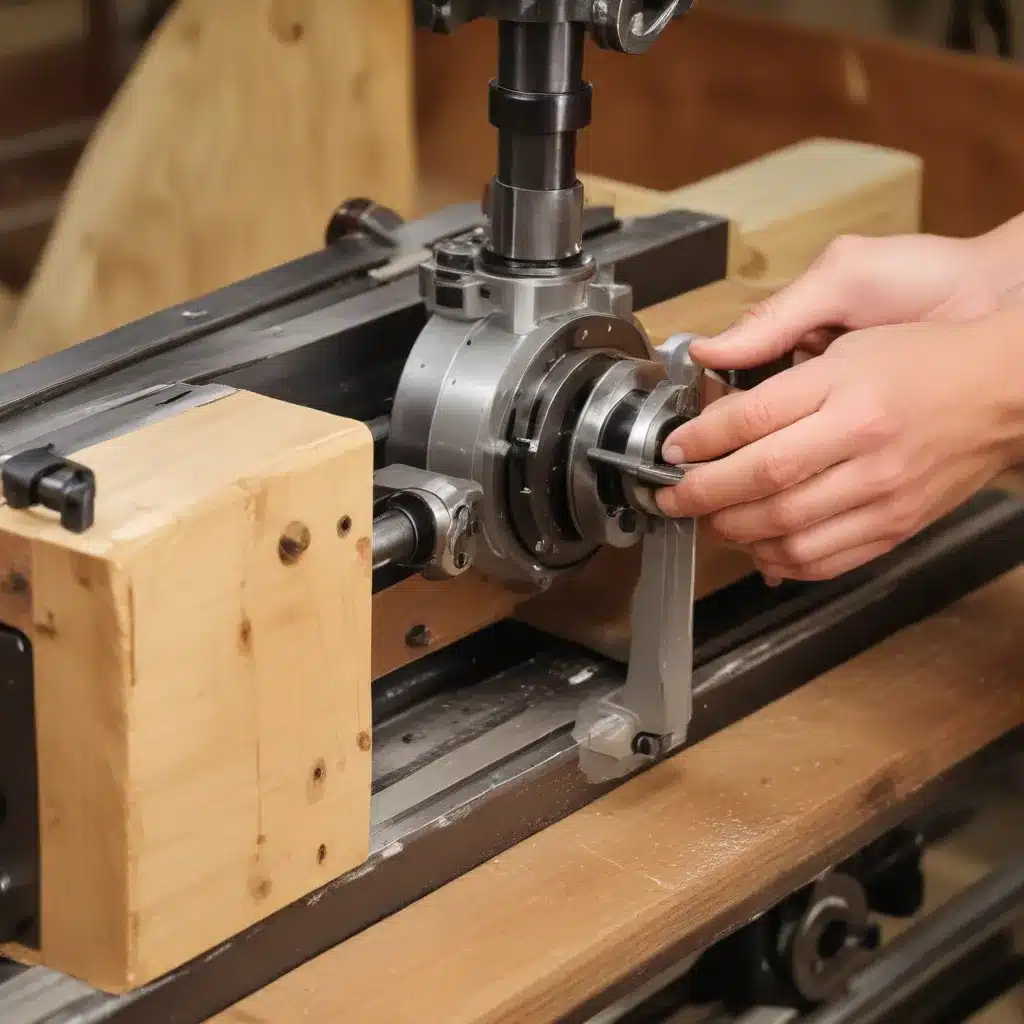
Maintaining Your Woodturning Lathe: A Comprehensive Guide
As an experienced woodworker and craftsman, I know firsthand the importance of keeping your woodturning lathe in top-notch condition. Whether you’re a hobbyist or a professional, your lathe is the heart of your woodworking operation, and proper maintenance is crucial for ensuring smooth, safe, and efficient performance. In this comprehensive guide, I’ll share my insights and practical tips on how to maintain your woodturning lathe, from regular cleaning and lubrication to troubleshooting common issues.
Importance of Lathe Maintenance
Your woodturning lathe is a complex piece of machinery, and like any tool, it requires regular care and attention to function at its best. Neglecting maintenance can lead to a host of problems, from decreased accuracy and performance to potential safety hazards. By keeping your lathe well-maintained, you’ll not only extend its lifespan but also ensure a safer and more enjoyable woodworking experience.
Daily Maintenance Tasks
Let’s start with the basics – the daily maintenance tasks you should perform to keep your lathe running smoothly.
Cleaning: After each use, take a few minutes to wipe down the entire lathe with a clean, dry cloth. This will remove any built-up dust, wood chips, or debris that could interfere with the lathe’s moving parts.
Lubrication: Refer to your lathe’s manual and apply the recommended lubricants to the appropriate areas, such as the spindle bearings, quill, and any sliding mechanisms. This will help reduce friction and wear, ensuring smooth operation.
Alignment Check: Periodically inspect the alignment of your tailstock, headstock, and tool rest. Ensure that they are properly positioned and secured, as any misalignment can lead to vibrations and inaccurate turning.
Safety Inspection: Before each use, perform a quick visual inspection of your lathe, checking for any loose bolts, damaged cords, or other potential safety issues. Address any concerns before turning on the machine.
Weekly Maintenance Tasks
In addition to your daily routine, set aside some time each week to perform more thorough maintenance.
Deep Cleaning: Use compressed air or a vacuum to thoroughly clean the lathe’s interior, removing any built-up sawdust or debris that could interfere with its operation. Don’t forget to clean the motor and electrical components as well.
Bearing Inspection: Check the condition of your lathe’s bearings by gently spinning the spindle and listening for any unusual noises or roughness. If you notice any issues, it may be time to have the bearings serviced or replaced.
Lubrication Refresh: Reapply lubricants to the areas you addressed during your daily maintenance, ensuring that all moving parts are well-oiled and protected.
Quarterly Maintenance Tasks
For a more comprehensive maintenance routine, plan to perform these tasks on a quarterly basis.
Thorough Inspection: Carefully inspect your lathe from top to bottom, looking for any signs of wear, damage, or potential issues. Pay close attention to the spindle, tailstock, tool rest, and any other critical components.
Belt Replacement: If your lathe is equipped with a drive belt, consider replacing it every few months to maintain optimal power transmission and prevent slippage.
Accessory Maintenance: Don’t forget to maintain any accessories you use with your lathe, such as chucks, faceplates, and centers. Clean, inspect, and lubricate them as needed to ensure they continue to function properly.
Calibration: Use a dial indicator or other precision measuring tools to check the accuracy of your lathe’s components, such as the tailstock alignment and spindle runout. Make any necessary adjustments to ensure your turning is as precise as possible.
Troubleshooting Common Issues
Even with the best maintenance practices, you may occasionally encounter problems with your woodturning lathe. Here are some common issues and how to address them:
Excessive Vibration: Check the lathe’s alignment, tighten any loose components, and ensure the workpiece is securely mounted. If the vibration persists, the issue may be with the lathe’s bearings or drive system.
Inconsistent Speed: Inspect the drive belt for signs of wear or damage, and replace it if necessary. Check the condition of the motor and its electrical connections as well.
Poor Surface Finish: Ensure your tools are sharp and properly maintained. Look for any issues with the lathe’s bearings or drive system that could be causing vibrations or speed irregularities.
Difficult Tool Control: Adjust the tool rest position and ensure it’s secure. Check the condition of your turning tools and consider sharpening or replacing them if necessary.
Eco-Friendly Woodworking Practices
As a conscious woodworker, I’m also committed to incorporating eco-friendly practices into my work. Here are a few tips for maintaining your lathe in a sustainable manner:
Dust Collection: Invest in a high-quality dust extraction system and use it diligently to minimize the release of airborne wood particles during your turning sessions.
Lubricant Selection: Choose environmentally-friendly lubricants that are biodegradable and non-toxic, reducing the impact on the environment.
Waste Reduction: Carefully plan your projects to minimize wood waste, and explore ways to repurpose or recycle any leftover materials.
Conclusion
Maintaining your woodturning lathe is an essential part of being a successful and responsible woodworker. By following the maintenance routines and troubleshooting tips outlined in this guide, you’ll keep your lathe running at its best, ensuring safer, more efficient, and more enjoyable woodworking experiences. Remember, a well-maintained lathe is the foundation for creating beautiful, high-quality turned pieces. Happy turning!
For more woodworking insights and project inspiration, be sure to visit our website at https://woodcraftparts.net/. There, you’ll find a wealth of resources to help you take your craftsmanship to new heights.

